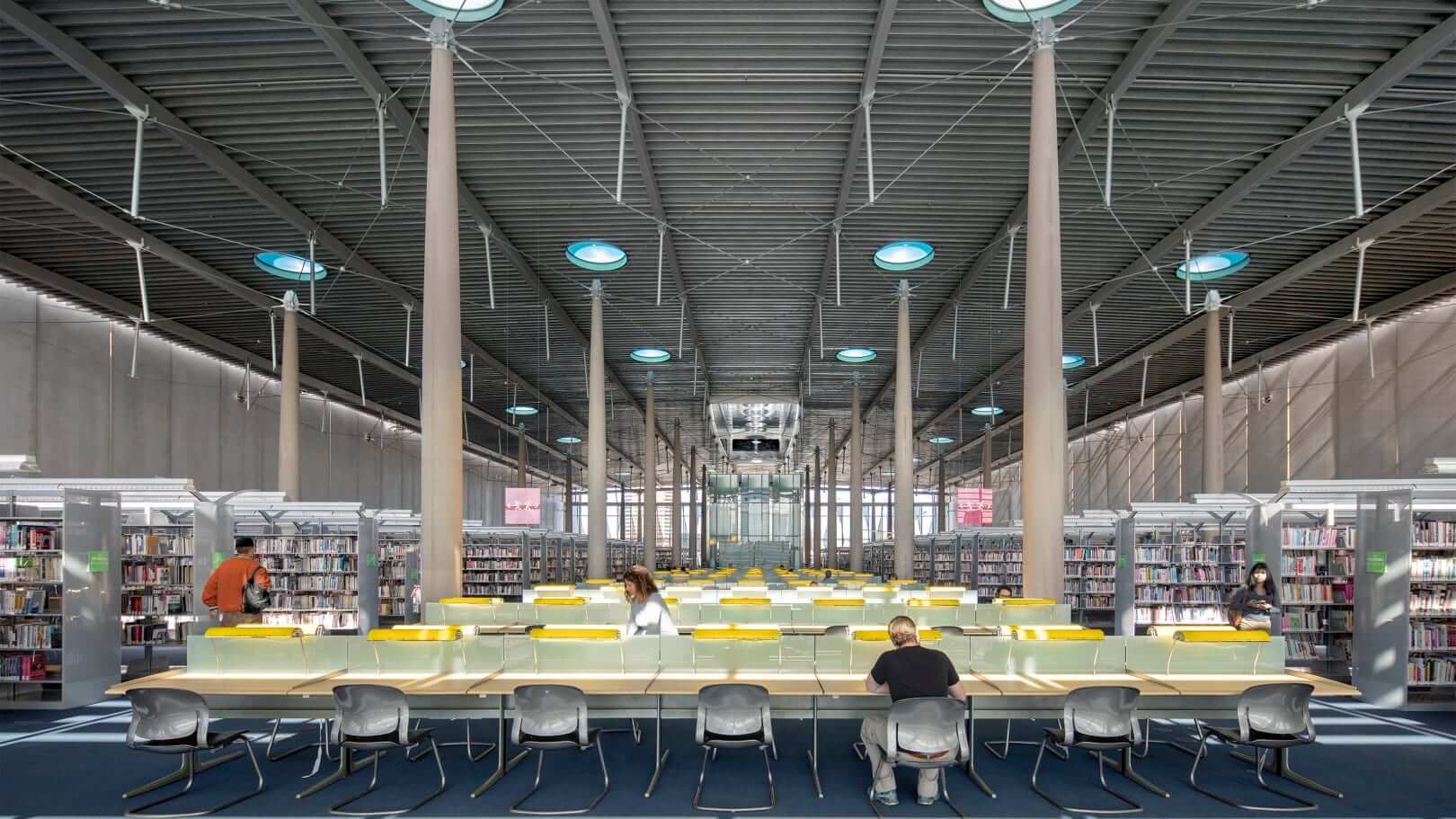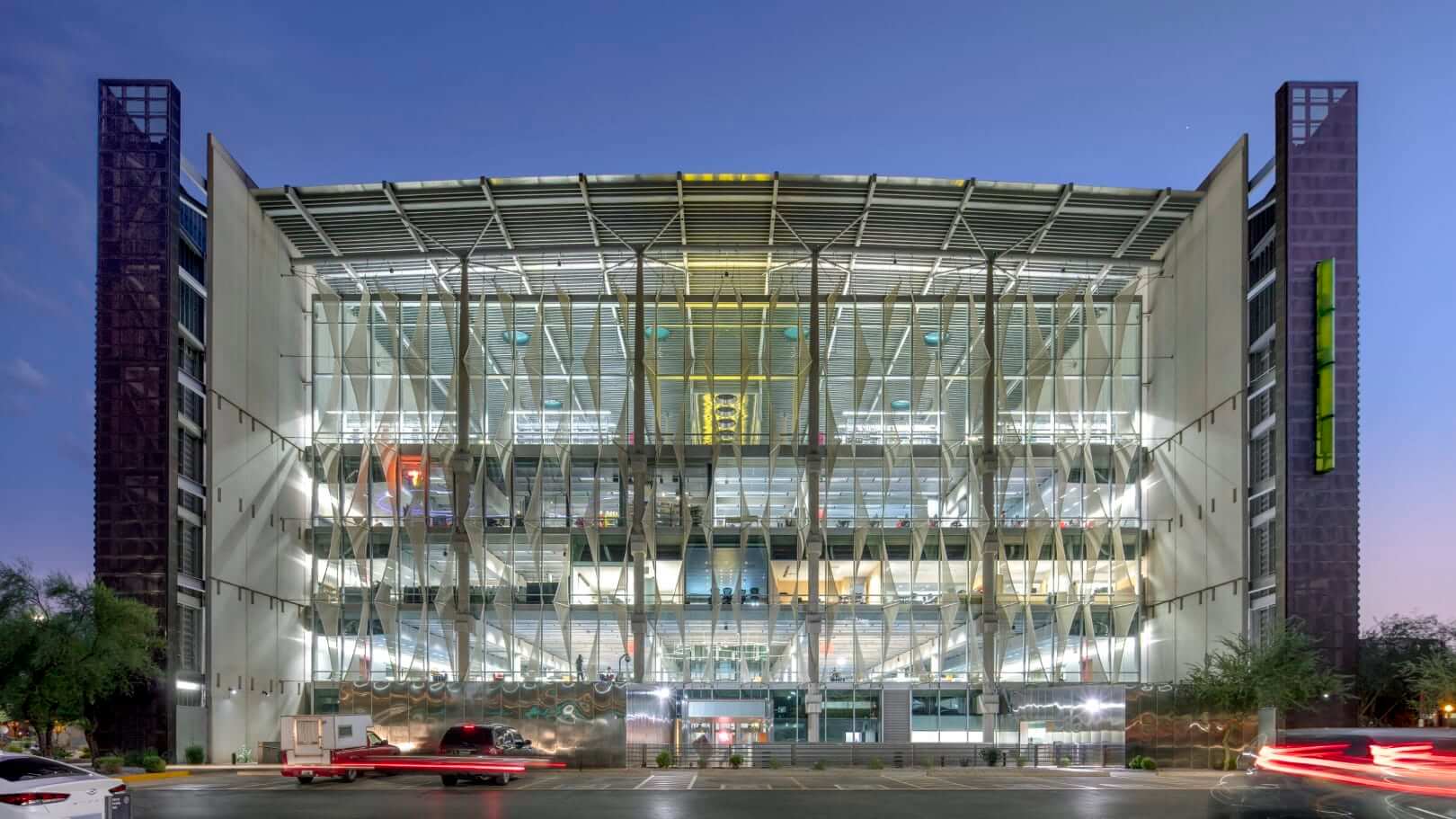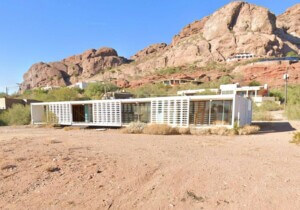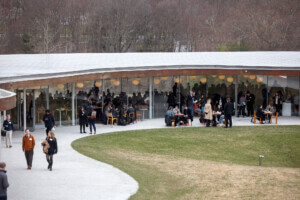Last week, the American Institute of Architects (AIA) announced the Burton Barr Phoenix Central Library, a soaring Arizonan athenaeum designed by Will Bruder Architects, in collaboration with DWL Architects + Planners, as the winner of this year’s Twenty-five Year Award.
The prestigious award is conferred annually to a (still in good shape) building completed, in this case, between 1987 and 1997, that has “stood the test of time” for 25–35 years while continuing to “set standards of excellence for its “architectural design and significance.” Opened in 1995 as a new flagship branch for the Arizona capital city’s municipal library system, the Burton Barr Phoenix Central Library is, despite being on the younger side for this particular awards program, an early and high-profile public architecture project in which sustainable design principals, specifically passive design, played a central role in its creation.
As detailed by the AIA in its profile of the building, the sculptural 280,000-square-foot library on Central Avenue was envisioned as a “warehouse of knowledge” and incorporated “high-efficiency and innovative mechanical and lighting solutions” including 12-inch precast concrete walls, solar-shaded glazing systems, and sophisticated gas chillers before the advent of United States Green Building Council’s Leadership in Energy and Environmental Design (LEED) certification program, which first launched in 1998 following several years of development. (In 2010, 15 years after it debuted to the public, the library received LEED-EB (LEED for Existing Buildings) Silver designation.)

“The uses of libraries, worldwide, have of course evolved substantially over the past 25 years,” said Jonathan Moody, president and CEO of the Columbus, Ohio-headquartered architectural firm Moody Nolan, in his letter nominating the library for the award. “As this nomination makes clear, the Phoenix Central Library has proven highly adaptable to these changes and serves its purpose as well today as the day it opened.”
The nine-person jury award panel ultimately agreed with Moody’s view of the project, a building that Phoenix Mayor Kate Gallego referred to in a statement as being reflective of “the values and diligence of an engaged public, led by visionary civic leaders committed to making a mark of quality, inclusion, and sustainability in the urban core of Phoenix.”
In addition to its pre-LEED commitment to sustainability, the project was also notable in that the City of Phoenix, under the leadership of former mayor Terry Goddard, ultimately tapped a local team for the planned library despite casting a wide international net for potential architects. Both based in Phoenix, Will Bruder Architects (now based in Portland, Oregon) and DWL Architects + Planners came together as bruderDWLarchitects for the project and were ultimately chosen by the city’s selection committee. Other key members of the project team included the California office of Ove Arup & Partners (now known as Arup) in the role of MEP and structural engineer, Hook Engineering as civil engineer, and Sundt Corp as general contractor. Community engagement and rigorous research played heavily into the pre-design phases and, per the AIA, the “team did not broach an architectural concept until the program was well understood, the site analysis complete, and deep technical research logged.”

bruderDWLarchitects’ intimacy with, and awe of, the surrounding desert landscape was, and continues to be, apparent in the design of the weathered copper-clad library, which has been likened to a manmade mesa in the heart of the Valley of the Sun.
“Rising above the low-slung urban fabric of the residential and commercial neighborhoods surrounding it, the library’s glazed north and south facades provide a fitting contrast and reveal its true nature, during the day and at night, by offering glimpses of its one million volume collection and the energy of its patrons,” wrote the AIA of the five-level building, which also features a magnificent, 90-foot-tall skylight atrium, a translucent central staircase emerging from a reflecting pool, a sprawling one-acre Great Reading Room on the fifth level, and a trio of high-speed glass elevators.
As noted by the AIA, Burton Barr Central Library, even over two decades after it first opened to the media-borrowing public, remains a top architectural destination in America’s fifth-most populous city and continues to “represent a source of great civic pride for the region.”
The 2020 winner of the AIA Twenty-five Year Award was Owen Moss Architects’ Conjunctive Points – The New City in Culver City, California.











